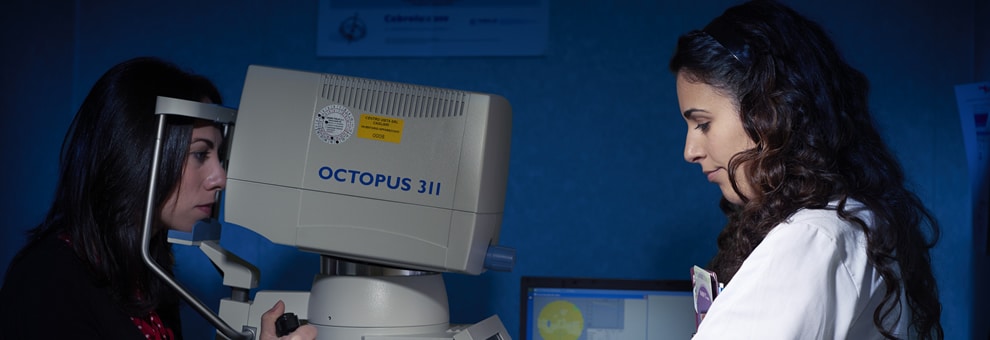Visual Field Test
The Visual Field can be defined as the portion of space that a still eye perceives in front of it.
It is analyzed with the Computerized Perimeter, which provides us a graphic design that allows us to interpret any defects found.
The visual Field Test is a fundamental assessment procedure, along with the intra-ocular pressure measurement, to be performed with varying periodicity depending on the case (from a minimum of 3 months to a maximum of 1 year) in the diagnosis and during the course of glaucoma.

The principle on which it is based is to project the lights of variable luminous intensity in the central retinal 30°: each light spot perceived by the patient will be signalled by the latter by pressing a button. The light stimulus for a given retinal point is projected several times, with different luminous intensities, so as to have quantitative data regarding the luminous perception of the examined area.
The visual field test is not only very important in ophthalmology, for the study of retinal troubles caused by glaucoma, diabetes, retinal breaks, etc., but also in neurology, since it allows viewing the damages to the retro-bulbar, chiasmatic and retrochiasmatic visual pathways up to the visual cortex, caused by ischemic, cancer-related, traumatic and neurological diseases of various kinds. The Visual Field Test is a non-invasive psychophysical easy to perform.
Want to learn more?

